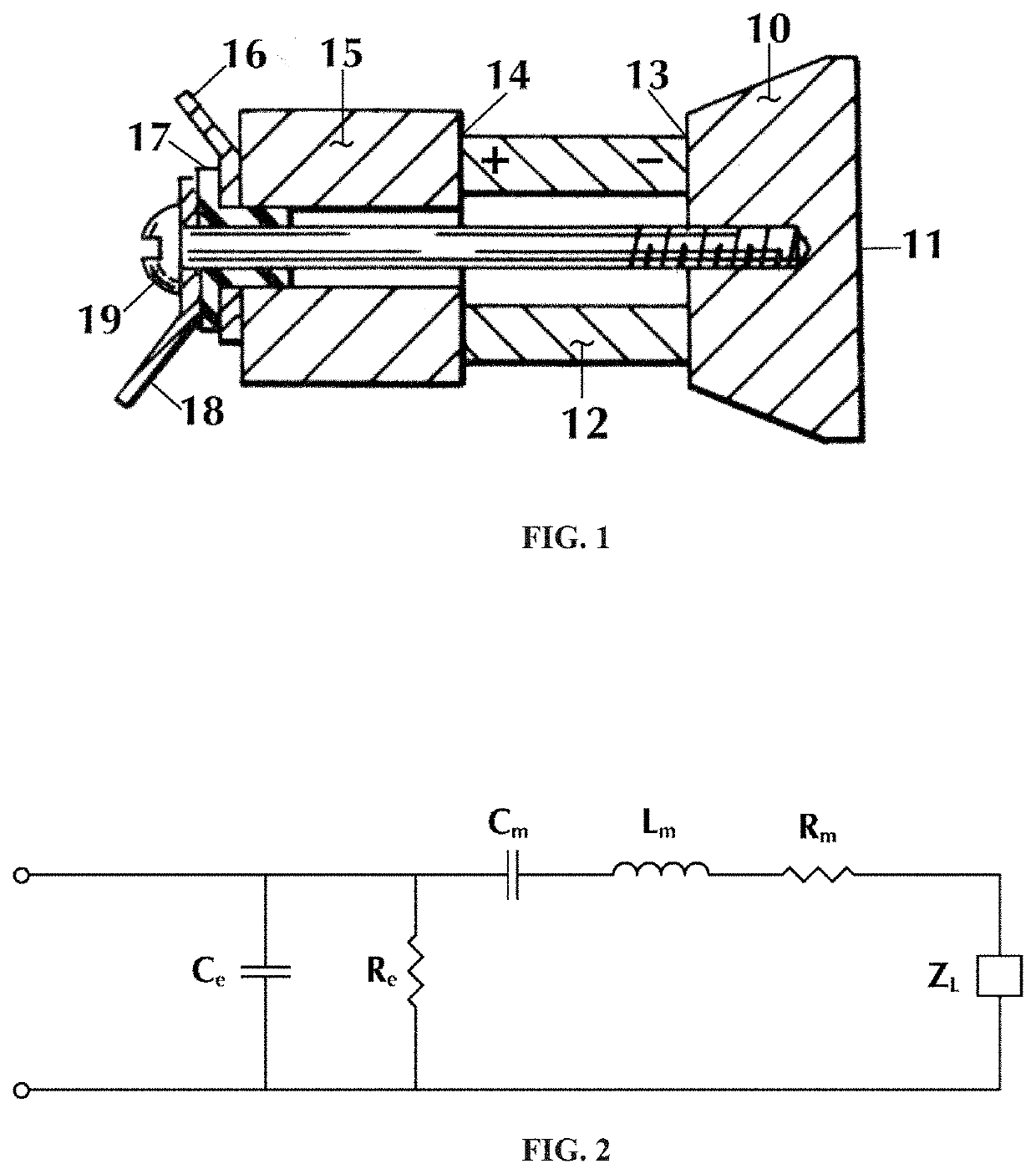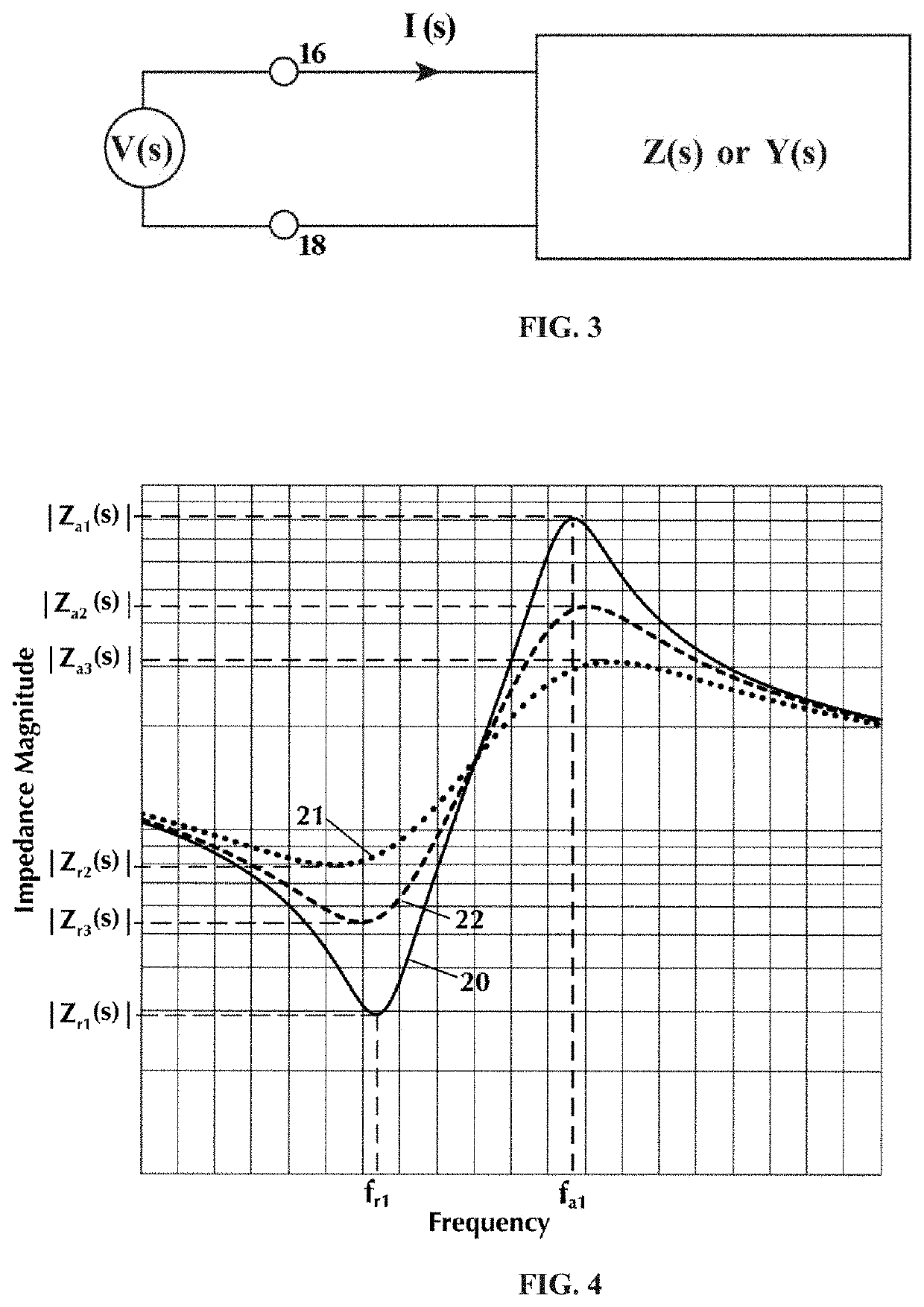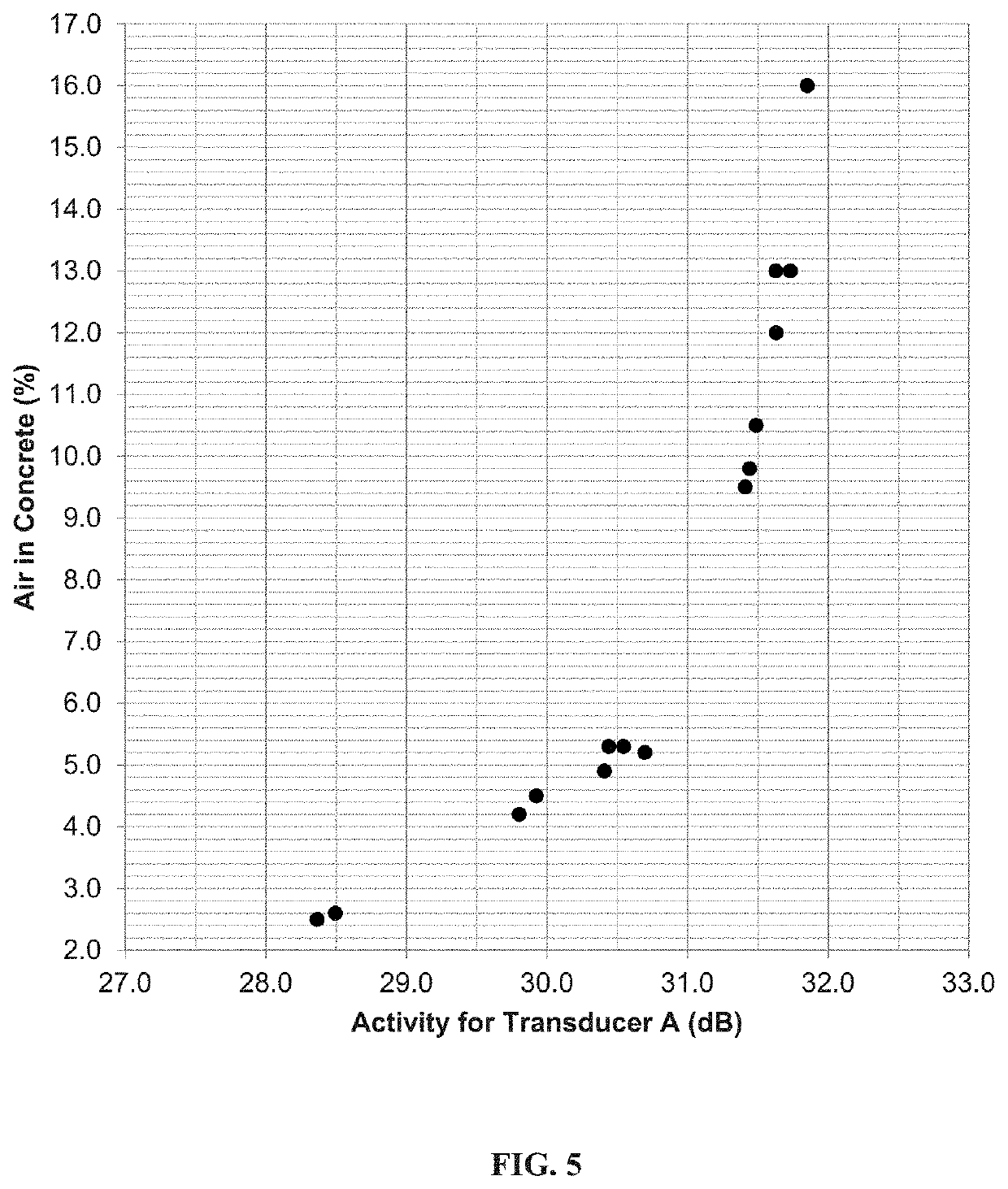Instrument For Direct Measurement Of Air Content In A Liquid Using A Resonant Electroacoustic Transducer
- Summary
- Abstract
- Description
- Claims
- Application Information
AI Technical Summary
Benefits of technology
Problems solved by technology
Method used
Image
Examples
Embodiment Construction
[0030]The invention is intended to measure physical properties in materials, such as liquids. The physical property may be the content of air or another gas. The liquid may include suspensions and slurries in which solid particles are carried within the fluid. As used herein, the term “suspension” or “slurry” means and refers to a dispersion of solid particles in a liquid, which may include cementitious and non-cementitious fluid suspensions. Examples include paper pulp, muds (e.g., drilling muds), cement paste, concrete, mortar, shotcrete, fermented. and carbonated liquids and slurries, food slurries and pastes, cosmetics, and hydraulic oils. Slurries are types of suspensions wherein viscosity is low enough to enable pumping, e.g., to facilitate transportation of the suspended solid phase such as pumping plastic (wet) concrete mixes through hoses. Among key characteristics of fluid suspensions are the volume fraction of solids and viscosity. The concept of viscosity can sometimes b...
PUM
| Property | Measurement | Unit |
|---|---|---|
| Volume | aaaaa | aaaaa |
| Electrical impedance | aaaaa | aaaaa |
| Sensitivity | aaaaa | aaaaa |
Abstract
Description
Claims
Application Information
 Login to View More
Login to View More - R&D
- Intellectual Property
- Life Sciences
- Materials
- Tech Scout
- Unparalleled Data Quality
- Higher Quality Content
- 60% Fewer Hallucinations
Browse by: Latest US Patents, China's latest patents, Technical Efficacy Thesaurus, Application Domain, Technology Topic, Popular Technical Reports.
© 2025 PatSnap. All rights reserved.Legal|Privacy policy|Modern Slavery Act Transparency Statement|Sitemap|About US| Contact US: help@patsnap.com



